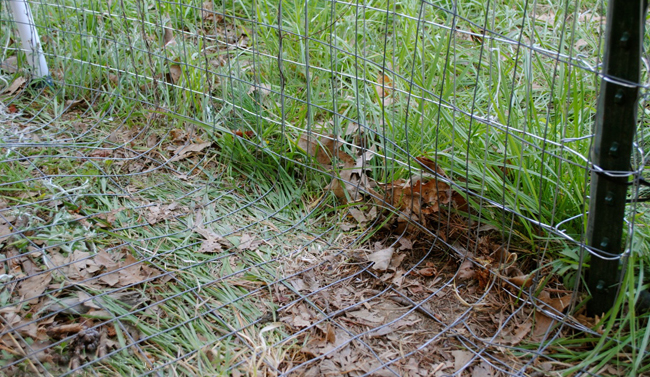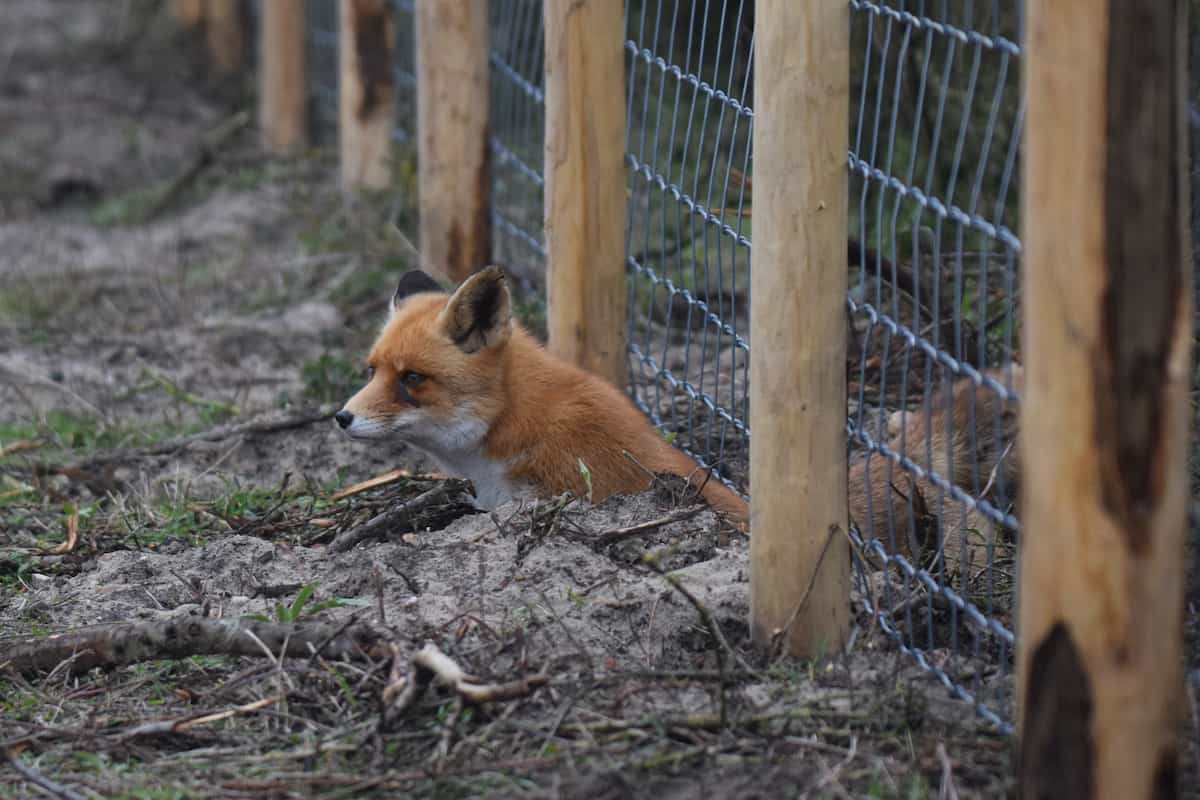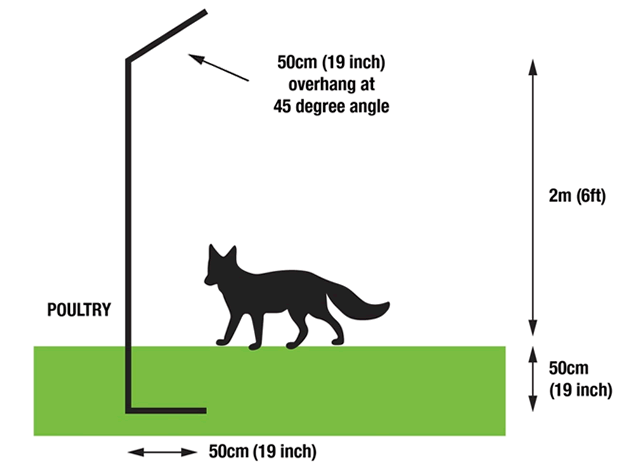To keep foxes out of your chicken coop, reinforce it with hardware cloth and secure locking mechanisms. Remove attractants like food scraps and water sources nearby.
Protecting backyard chickens from clever predators, such as foxes, is a critical aspect of poultry care for owners. Ensuring the safety of your flock involves a multifaceted approach, combining strong physical barriers, diligent coop maintenance, and the removal of enticements from the surrounding environment.
With the increase in urban fox populations, even suburban coops are at risk, making it essential to employ reliable strategies to deter these cunning intruders. Owners must remain vigilant, as foxes are known for their persistence and agility, often able to overcome weaker defenses. A well-secured chicken coop not only safeguards your poultry but also discourages foxes from viewing your property as a potential feeding ground, keeping both your chickens and local wildlife in balance.
Introduction To Backyard Poultry And Predators
Embracing the joys of backyard chickens brings many rewards. These feathered friends provide fresh eggs, natural pest control, and joy to garden spaces. Yet, navigating the challenges of protecting these vulnerable birds from clever predators becomes a crucial part of the journey. Awareness and defense strategies against predators are key to keeping your flock safe.
Popularity Of Raising Chickens
Raising backyard chickens has sky-rocketed in popularity. Families and food enthusiasts appreciate the sustainable lifestyle and local food source chickens offer. But as more people join the poultry-keeping community, it’s important to understand the facts and necessary precautions for healthy, happy chickens.
Common Threats: The Sly Fox
The fox is a notorious chicken predator. With stealth and agility, foxes can wreak havoc in a coop. Spotting their red fur and bushy tails is a clear sign your chickens are at risk. Securing coops and runs against these sly invaders is critical for your chickens’ survival.

Credit: www.somerzby.com.au
Fox Behavior And Motivation
Protecting backyard chickens from crafty foxes is a common challenge for poultry owners. Foxes are natural hunters, clever, and motivated by their need to survive. Understanding their behavior and what lures them to chicken coops can help in devising effective strategies to keep them out.
Understanding Fox Habits
Foxes are creatures of habit, known for their keen survival instincts and adaptability. They are most active at dusk and dawn, times when chickens are typically less alert and more vulnerable. Foxes also tend to return to places where they have successfully found food before, making consistent coop defense crucial.
- Active during dusk and dawn
- Can dig and climb to find food
- Remember past successful hunts
What Attracts Foxes To Chicken Coops
Easily accessible chickens are a prime target for hungry foxes. Open pens, unsecured nesting areas, and leftovers can draw them in. The scent of hens and their noises can be irresistible to a fox. Tightening coop security and minimizing attractants reduces the risk of a fox visit.
| Attractants | Solutions |
|---|---|
| Food scraps | Keep area clean |
| Water sources | Secure water containers |
| Unsecured chickens | Use lockable coops |
Securing The Chicken Coop
Keeping your chickens safe means making sure their home is as fox-proof as possible. Foxes are clever and determined predators, but a well-secured coop can keep your feathery friends safe. Let’s talk about how to strengthen your coop against these wily intruders.
Strong Fencing Essentials
- Dig a trench: Foxes dig, so outsmart them from below. Bury your fence at least 12 inches underground.
- Overhangs thwart climbers: Add a 45-degree angle at the top of your fence. It stops foxes from climbing over.
- Quality materials matter: Use thick, heavy-duty fencing. It resists chewing and keeps foxes out.
Using Hardware Cloth Effectively
Hardware cloth is your coop’s best friend. Unlike chicken wire, it’s made of stronger stuff. It keeps out foxes, snakes, and even rats. Here’s how to use it right:
- Cover all openings: Any gap or vent should have hardware cloth, not just the fencing.
- Secure it with screws: Use washer-head screws for a tight fit that can’t be pried open.
- Inspect regularly: Check for damage or weak spots. Fix any issues immediately.
Coop Fortification Strategies
Protect your feathered friends from clever foxes by beefing up your hen house. Bold, smart moves keep chickens safe. Let’s explore top strategies.
Elevating The Hen House
Raise your coop off the ground to defeat digging foxes. A good elevation stops pests before they start. It’s fox-proofing 101!
- Stilts or blocks: Lift coops with these for height.
- Chicken ramps: Ensure safe chicken access.
- Solid base: Discourage fox tunneling.
Secure Locking Mechanisms
Outsmart a fox with tough locks! Common latches won’t do. Choose robust options to keep your coop secure.
| Lock Type | Benefits |
|---|---|
| Slide bolts | Fox-proof, hard to slide open. |
| Padlocks | Durable; resist tampering. |
| Combination locks | No key loss; Resettable code. |
Double-check at dusk. Ensure all access points are secure.
Deterrents And Scare Tactics
Keeping clever foxes away from a chicken coop demands creativity. Sensory repellents and guard animals become the first line of defense. They protect poultry with efficiency. Craft the right strategy with these proven methods.
Employing Sensory RepellentsEmploying Sensory Repellents
Sensory repellents target a fox’s senses.
- Auditory: High-frequency sounds or sudden loud noises can scare foxes.
- Visual: Flashing lights or motion-activated sensors deter curious foxes.
- Smell: Use scents like garlic, chili, or commercial fox repellents to keep them at bay.
- Taste: Bitter or spicy taste deterrents on coop surfaces prevent chewing.
| Type | Examples |
|---|---|
| Auditory | Ultrasonic devices, Alarms |
| Visual | Reflective tape, Strobe lights |
| Smell | Predator urines, Ammonia |
| Taste | Non-toxic bitterants |
Guard Animals: A Natural Solution
Guard animals bond with chickens while keeping predators like foxes away.
- Dogs: Select breeds known for their protective instincts.
- Geese: Their honks and territorial behavior can frighten intruders.
- Llamas: Naturally alert and suspicious of foxes and other predators.
- Donkeys: They are vigilant and will chase off unwanted visitors.
| Animal | Benefits |
|---|---|
| Dogs | Loyal, Alert, Protective |
| Geese | Noisy, Territorial |
| Llamas | Intimidating presence |
| Donkeys | Chase predators |
Creating A Perimeter Defense
A strong perimeter defense is key to keeping foxes from your chicken coop. The goal is to deter foxes before they reach your chickens. Let’s explore ways to protect your feathered friends with effective barriers and alarms.
Installing Electric Fencing
Electric fencing provides a shock to any fox that touches it. This deterrent is both safe and effective. Below are steps to install an electric fence:
- Measure the perimeter – Determine the length of fence needed.
- Choose the right fence – Pick a fence designed for poultry.
- Install posts – Space them evenly around your coop.
- Attach the fence – Roll out wire or netting on the posts.
- Connect to an energizer – This supplies power to the fence.
- Ground the system – A proper ground is crucial for function.
- Test the fence – Ensure it delivers a consistent shock.
Motion-activated Lights And Sounds
Motion-activated lights and sounds scare away predators before they can harm your chickens. Here’s how to use them:
- Choose the right device – Pick devices that trigger both lights and noise.
- Strategic placement – Position them to cover all entrance points.
- Test sensitivity – Adjust so they activate for foxes, not smaller animals.
- Regular checks – Inspect to ensure devices are always functioning.
By integrating these defenses, you can sleep soundly knowing your chickens are safe from foxes.
Maintenance And Vigilance
Keeping chickens safe means staying one step ahead of foxes. Maintenance and vigilance are your best tools. They ensure your coop remains an impenetrable fortress. Regular checks and immediate action are the keys to success. Let’s dive into the tactics that can save your chickens from cunning predators.
Routine Inspections
Set a schedule to look over your chicken coop. This is important. Do this at least once a week. Look for signs of wear or damage. Foxes can sneak in through small gaps or weak spots.
- Check the fences: Look for holes or loose wires.
- Examine the coop: Search for cracks or holes.
- Review the ground: Ensure there are no digging signs.
- Latches: Check that locks are functioning properly.
Immediate Repair Of Breaches
If you find a gap or damage, fix it right away. Don’t wait. Foxes are quick to exploit any weakness.
| Issue | Action |
|---|---|
| Broken Fences | Replace or mend the section. |
| Holes in Coop | Fill in with wood or metal sheets. |
| Weak Latches | Install new, sturdy locks. |
Use strong materials that resist gnawing or tearing. Steel mesh or heavy-duty hardware cloth are excellent choices. Remember, maintenance and vigilance are continuous efforts. Protect your chickens by staying alert and proactive.

Credit: www.chickencoopsdirect.com
Innovative Technology In Protection
Foxes are cunning, but technology is smarter. Protecting chicken coops has gone high-tech. Discover cutting-edge solutions that safeguard poultry with efficiency. Learn how modern technology provides the best defense against foxes.
Utilizing Surveillance Systems
Surveillance systems are essential. They act as a night watchman for chicken coops. Cameras deter foxes and alert owners of intruders. Here are the best ways to implement them:
- Install motion-activated cameras around the coop.
- Use Night vision for clear images after sunset.
- Set up alerts to receive real-time notifications on your phone.
Smart Coop Gadgets
Embrace smart coop gadgets. These devices upgrade protection through innovation. See how they work:
- A coop door controller automatically shuts at dusk and opens at dawn.
- Automatic feeders keep food secure and reduce attraction.
- Sonic deterrents emit sounds that scare foxes away.
Use technology to keep chickens safe. Peace of mind comes standard with these advanced tools.
Incorporating Natural Deterrence
Foxes are sly, but your chicken coop doesn’t have to be an easy target. Nature has its own ways to keep these cunning creatures at bay. With the right natural deterrence, you can protect your poultry without harsh measures. Let’s explore how thoughtful landscaping and helpful plants and animals play a role in keeping your chickens safe.
Landscaping To Limit Fox Access
Smart landscaping helps control fox movement. Create barriers and strategically design your garden to make access tougher for these predators.
- Fence with buried hardware cloth: Blocks digging attempts.
- Dense hedges: Serves as natural walls.
- Raised beds: Elevates chickens, deterring foxes.
Combine these features to form a multi-layered barrier. Your coop becomes a fortress set in a natural moat.
Beneficial Plants And Animals
Choosing the right plants and allies keeps foxes away. Let’s see how nature’s diversity works for your flock.
| Plant/Animal | Benefit |
|---|---|
| Marigolds | Strong scent repels pests. |
| Rosemary | Foxes dislike its odor. |
| Dogs | Provide active protection. |
| Geese | Alert with loud honks. |
Together, these plants and animals create an eco-friendly shield around your coop.

Credit: morningchores.com
Legal And Ethical Considerations
When it comes to protecting your chickens from foxes, it’s important to consider both legal and humane approaches. This includes understanding wildlife laws that protect foxes and ensuring any deterrents or protective measures are ethical. This section will guide you through the legal and humane aspects of keeping foxes out of your chicken coop.
Understanding Wildlife Laws
Navigating local wildlife laws is crucial. These laws often protect foxes from harm. You must know what actions are legal in your area. Your local wildlife agency offers guidance on these regulations.
Common restrictions may include:
- No trapping or relocating without a permit.
- Prohibitions on certain types of fences or deterrents.
- Laws regarding the treatment of injured or orphaned wildlife.
Humane Treatment Of Foxes
Foxes, as wild animals, deserve humane treatment. Your strategies for protecting chickens should not harm foxes.
Humane deterrents include:
- Installing secure fencing that prevents digging or climbing.
- Using motion-activated lights or sprinklers to scare foxes without causing harm.
- Employing guardians like dogs that can safely scare foxes away.
Community Efforts In Predator Control
Protecting your chickens from cunning foxes requires a community effort. Neighbors working together can create a safer environment for everyone’s backyard flocks. Let’s explore how coordinated efforts and local resources can keep those sneaky predators at bay.
Neighborly Cooperation
Teamwork is key in keeping foxes away from your feathered friends. Talk with your neighbors and establish a plan that increases safety for all chicken coops in the area. Here’s how you can band together:
- Share best practices: Discuss strategies that have worked for each of you.
- Watch schedules: Create a roster for observing any unusual activity, especially at dusk and dawn when foxes are most active.
- Fence checks: Regular inspections of coop enclosures can prevent potential breaches.
- Group purchases: Buy predator deterrents in bulk, such as motion-activated lights or fencing, to save money.
Local Wildlife Management Resources
Your local wildlife management can be a great ally in the fight against predators. They provide valuable resources, including:
- Educational materials: Learn about fox behavior and how to discourage their visits.
- Workshops: Attend sessions on building secure chicken coops and using non-lethal deterrents.
- Professional assistance: Get help from wildlife experts for persistent predator issues.
Conclusion: Sustainable Coexistence
Addressing the problem of foxes near chicken coops is not just about protection but also about finding a balance. It is crucial to safeguard our poultry while respecting wildlife. A sustainable approach ensures long-term success and harmony.
Balancing Poultry Safety With Wildlife
To maintain this balance, let’s address several strategies:
- Secure the perimeter: Ensure your chicken coop has robust fencing.
- Natural repellents: Utilize smells and sounds that deter foxes but do no harm to them.
- Habitat alteration: Make your property less appealing by removing food sources and shelters for foxes.
Remember, the goal is to discourage foxes without harming them. This approach is kind to the ecosystem.
Commitment To Continuous Learning
As we learn more about fox behavior, our strategies can improve:
- Stay informed: Keep up-to-date with the latest wildlife deterrence techniques.
- Community advice: Share tips with neighbors for a collective defense.
- Effectiveness review: Regularly assess the strategies you use for gaps or improvements.
This ongoing process ensures our methods are effective and humanely coexist with nature.
Conclusion
Securing your chicken coop from foxes ensures the safety of your poultry investments. Implementing deterrents like secure fencing, guard animals, and coop fortifications is crucial. Regular maintenance checks will keep defenses robust. Embrace these strategies, and sleep easy knowing your chickens are well-protected against cunning predators.
Stay vigilant, stay safe.







